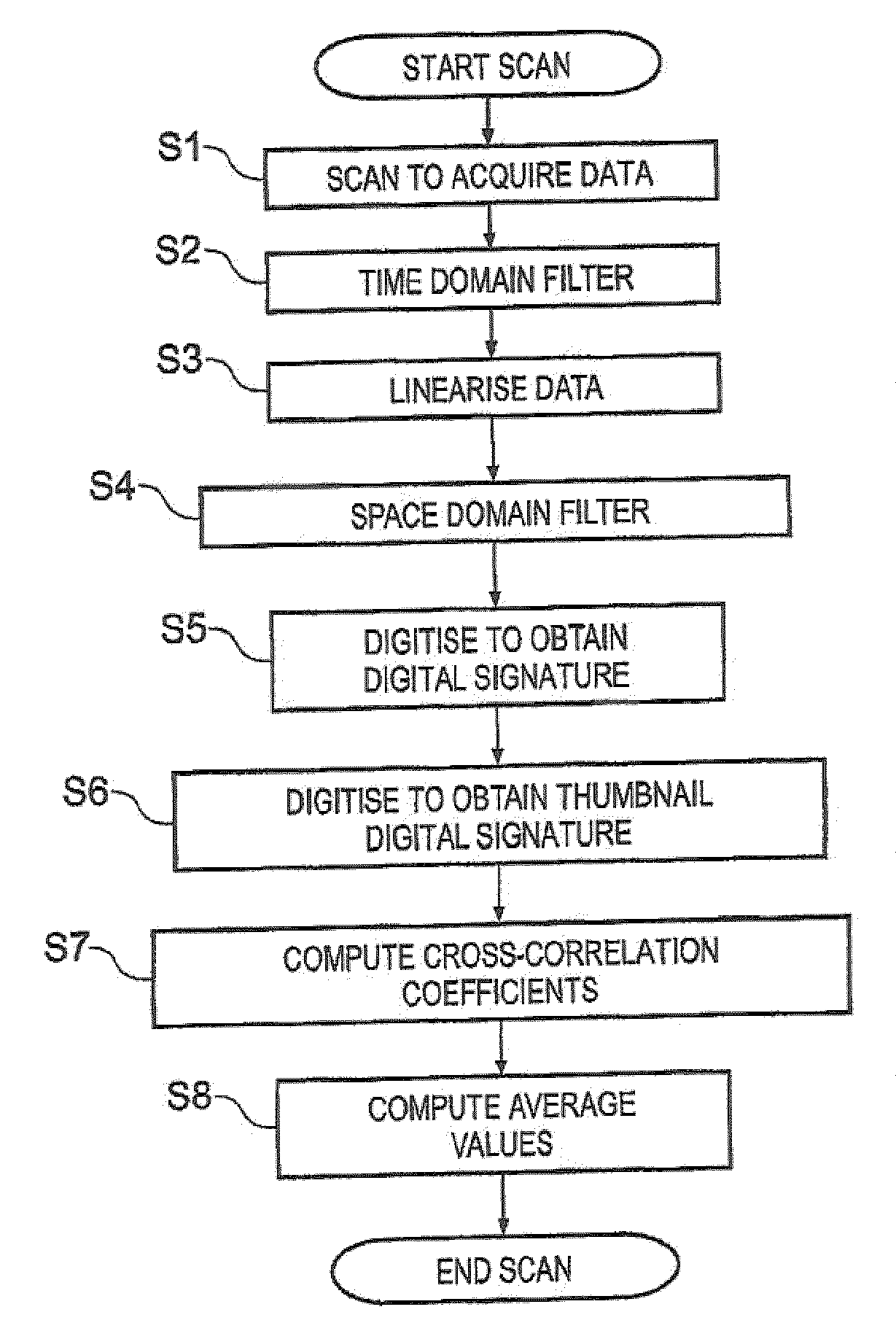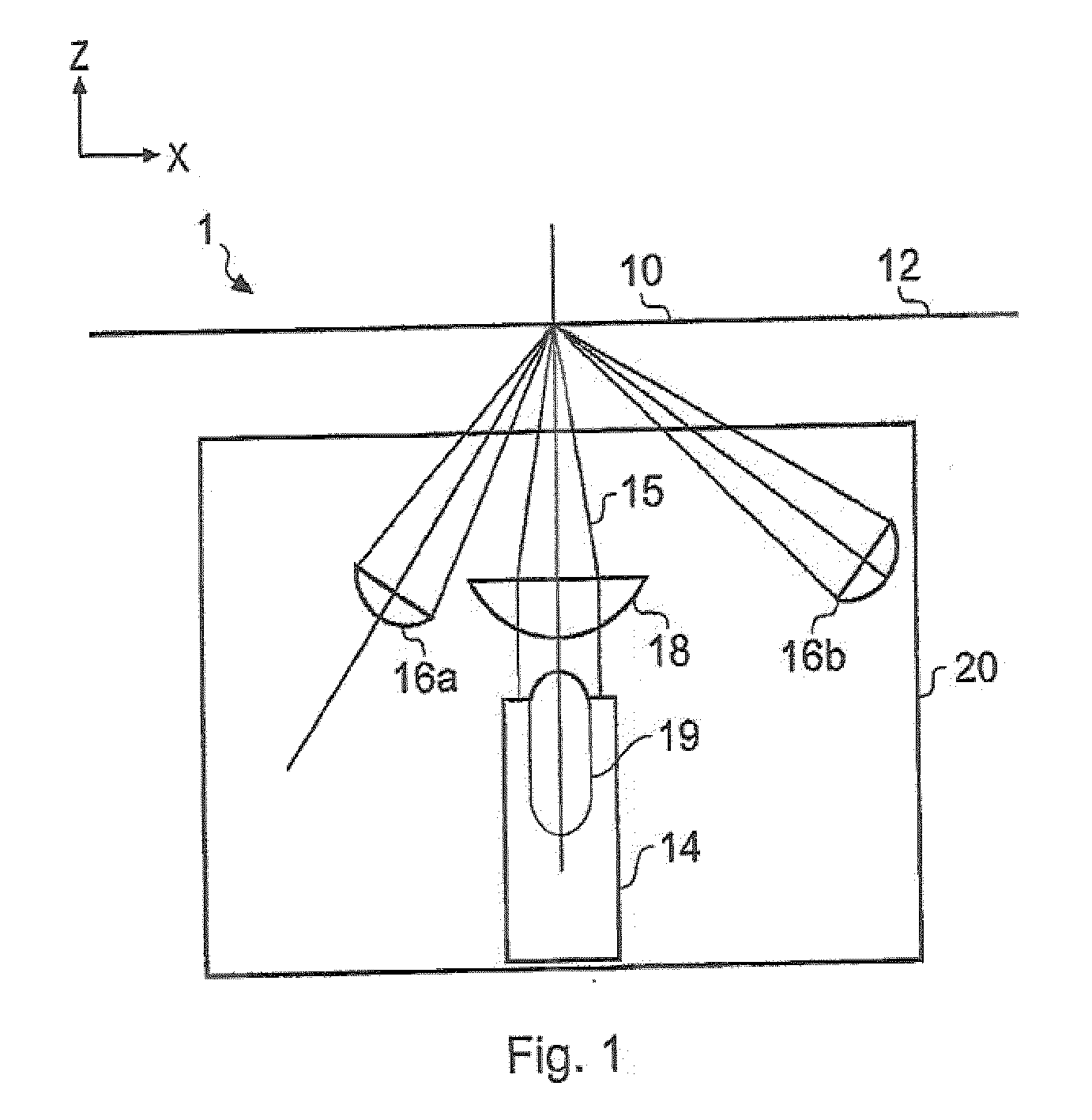Authentication Scanner
a scanner and scanner head technology, applied in the field of scanners, can solve the problems of reducing the scanning speed and slowing down the scanning process, and achieve the effects of less movement of the scanner head, reduced the number of components required, and convenient us
- Summary
- Abstract
- Description
- Claims
- Application Information
AI Technical Summary
Benefits of technology
Problems solved by technology
Method used
Image
Examples
Embodiment Construction
[0036]To provide an accurate method for uniquely identifying an article, it is possible to use a system which relies upon optical reflections from a surface of the article. An example of such a system will be described with reference to FIGS. 1 to 10.
[0037]The example system described herein is one developed and marketed by Ingenia Technologies Ltd. This system is operable to analyse the random surface patterning of a paper, cardboard, plastic or metal article, such as a sheet of paper, an identity card or passport, a security seal, a payment card etc to uniquely identify a given article. This system is described in detail in a number of published patent applications, including GB0405641.2 filed 12 Mar. 2004 (published as GB2411954 14 Sep. 2005), GB0418138.4 filed 13 Aug. 2004 (published as GB2417707 8 Mar. 2006), U.S. 60 / 601,464 filed 13 Aug. 2004, U.S. 60 / 601,463 filed 13 Aug. 2004, U.S. 60 / 610,075 filed 15 Sep. 2004, GB 0418178.0 filed 13 Aug. 2004 (published as GB2417074 15 Feb....
PUM
 Login to View More
Login to View More Abstract
Description
Claims
Application Information
 Login to View More
Login to View More - R&D
- Intellectual Property
- Life Sciences
- Materials
- Tech Scout
- Unparalleled Data Quality
- Higher Quality Content
- 60% Fewer Hallucinations
Browse by: Latest US Patents, China's latest patents, Technical Efficacy Thesaurus, Application Domain, Technology Topic, Popular Technical Reports.
© 2025 PatSnap. All rights reserved.Legal|Privacy policy|Modern Slavery Act Transparency Statement|Sitemap|About US| Contact US: help@patsnap.com



